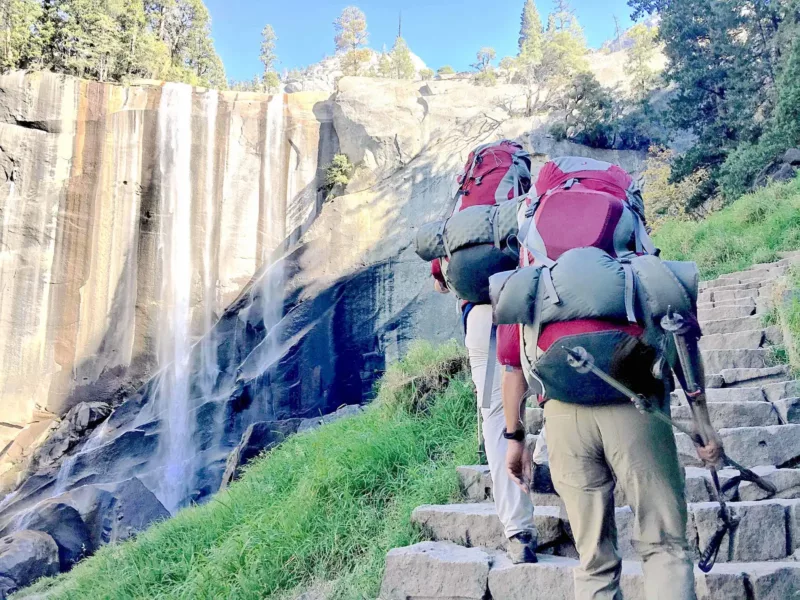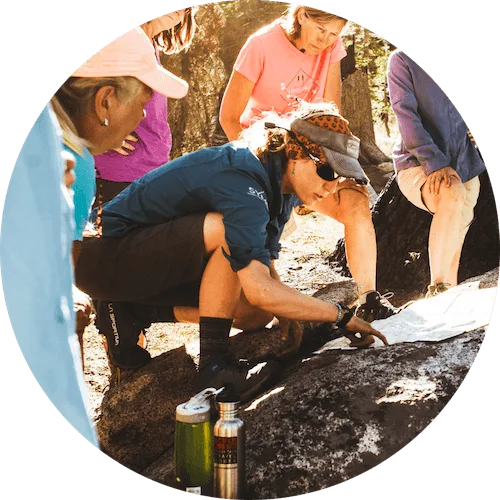By SYMG Guide Scott Morris
You’ve decided where you’re going, and you’ve decided when you’ll go there. Your travel plans are coming together and you’re wrapping your head around the packing list. One important step remains – in order to get the most out of your mountain adventure, you may want to revisit your fitness before you arrive in the Sierra.
Lifestyle
Before starting any kind of fitness regimen, examine your lifestyle, and ask yourself if your daily routines are setting you up for success. Getting the right amount of sleep, drinking enough water, managing stress, and eating a diverse diet of healthy foods are all going to have you getting more out of your fitness work and will have you arriving on the first day of your trip ready to immerse yourself in the splendor of the High Sierra.
Light Cardio
If you’re just starting out a fitness regimen, it’s important to have patience with yourself. Everyone is starting out at a different point, so if you haven’t exercised in a while, start out with a thirty minute walk on flat ground, a few times a week. Add ten minutes per walk or an extra walk each week until you’re at an hour of swift walking five days a week. Once this is comfortable, aim to maintain sixty minutes of active movement most days, but work to increase the intensity. To do this you can add a day per week of running, cycling, or hiking, whatever you feel comfortable with and enjoy. You can expand your walks and get into some hillier terrain, always shooting for that goal of sixty minutes of challenge per day in the weeks and months leading up to your trip. Cycling is a popular way for many people to increase their cardiovascular fitness. It’s a good next step because it simultaneous engages respiratory endurance with the muscular systems of the leg that are relied on while hiking.
Muscular Cardio
The last step of preparation is muscular cardio. There’s two exercises here I’ll recommend above all others, and the first is swimming. Swimming provides a good combination of muscular endurance and cardio, all while providing a full-body workout to a range of muscular systems. If you’re not an experienced swimmer, get a kickboard and hold it in front of you while kicking with your legs; you’re strengthening the muscles of your core and legs and getting a cardio workout at the same time.
The second and, in my opinion, best way to prepare for a backpacking trip is to move your body uphill with a bit of weight on your back. Start small – just a few books in a backpack is a good place to start. If you live near a steep hill, make a few laps up and down with your backpack on, while wearing the shoes you’ll be using for your trip. If you don’t live in hill country, go to your local gym with your pack and boots and get on a Stairmaster machine, or a treadmill that has a variable inclination function. As this becomes more comfortable, add more weight – books, water bottles, whatever you have at hand that’s heavy – and do more laps. After a few stories on the stairmaster or laps on a steep hill, your lungs will start to burn, well preparing you for the challenge you might find at the end of a day in the mountains, at altitude. Remember that lifestyle is an important part of preparation: get into the habit of staying hydrated, and always make sure you’re giving yourself enough time to recover after each workout.
The Take Home Message
Physical challenge is an important part of getting into the mountains. If that which is gained too easily is esteemed too lightly, then by working to get to these places we’re increasing the payoff for ourselves. It’s a challenge, but a manageable challenge, and with a bit of preparation beforehand you can arrive for the first day of your trip confident, ready to dive fully into the adventure and appreciate your surroundings for all they have to offer.
SYMG Guide Scott Morris specializes in our long-distance backpacking trips. He has through-hiked Vermont’s 280-mile Long Trail in just 9.5 days, has participated in several 100-mile ultramarathons, a few Ironman Triathlons, and many more trail races. You can read more about Scott and the rest of the SYMG Guide Staff Here.


